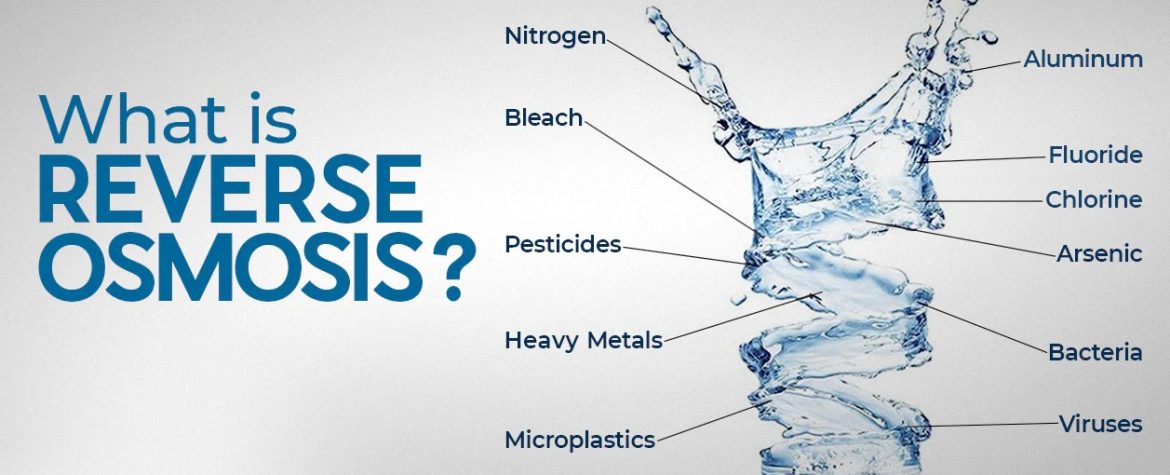In today’s world, access to clean and safe drinking water is a fundamental necessity. One technology that has made a significant impact in ensuring the purity of our water supply is reverse osmosis. In this article, we will delve into the depths of reverse osmosis, exploring what it is, how it works, its applications, and its benefits.
If you want to ensure the best quality water for ice and drinking water we recommend reading the article – Reverse osmosis for refrigerator.
Introduction to Reverse Osmosis
Reverse osmosis, often abbreviated as RO, has emerged as a leading water purification technology, experiencing a notable surge in popularity in recent years. This cutting-edge method excels at the removal of undesirable elements, minerals, and impurities from water, employing a semi-permeable membrane to achieve this feat. Its effectiveness makes it the preferred option for those seeking to elevate the quality and safety of their water supply. RO not only ensures the removal of contaminants but also enhances the overall taste and purity of water, making it a trusted choice for homes, industries, and various applications where clean and safe water is paramount.
How Reverse Osmosis Works
Within the realm of reverse osmosis, water undergoes a transformative journey. It is propelled through a membrane with remarkable selectivity, permitting only water molecules to traverse while obstructing the passage of larger molecules and unwanted impurities. Through this meticulously designed process, contaminants are efficiently sieved out, resulting in the delivery of exceptionally pure and crystal-clear water, free from the burdens of impurities that can compromise its safety and taste. Reverse osmosis has proven to be a technology of choice for countless individuals seeking the assurance of high-quality, purified water for various applications.
The Key Components of Reverse Osmosis
A standard reverse osmosis system comprises a set of essential components, each playing a crucial role in the purification process. It initiates with a pre-filter, specifically designed to eliminate sediments, ensuring that the water entering the system is free from particulate matter. The heart of the system is the semi-permeable membrane, the central player responsible for selectively allowing water molecules to pass while effectively blocking larger molecules and contaminants. Following this, a post-filter comes into play, enhancing the water’s taste and quality before it reaches its final destination. This purified water is stored in a dedicated tank, ready for dispensing via a faucet, ensuring a steady supply of clean and safe drinking water.
Applications of Reverse Osmosis
Reverse osmosis finds extensive utility across a diverse range of applications, serving critical roles in multiple sectors. Its presence is strongly felt in residential settings where it provides households with a dependable source of clean drinking water, ensuring the health and well-being of families. On an industrial scale, reverse osmosis is a linchpin in water treatment processes, facilitating the purification of water for various manufacturing and processing needs. Moreover, it plays a pivotal role in the desalination of seawater, transforming saline waters into potable resources. Remarkably, even the medical field benefits from RO, employing it in devices that produce ultra-pure water essential for life-saving procedures like dialysis.
Advantages of Reverse Osmosis
- Exceptional water purification: RO systems can remove up to 99% of contaminants.
- Improved taste and odor: The post-filter enhances the overall quality of water.
- Space-efficient: RO systems can fit under the kitchen sink.
- Cost-effective: Reduces the need for bottled water.
- Environmentally friendly: Reduces plastic waste.
Maintenance and Care of Reverse Osmosis Systems
Safeguarding the durability and efficiency of your RO system requires a steadfast commitment to routine maintenance. This encompasses tasks such as the periodic replacement of filters, meticulous sanitation of the system’s components, and vigilant monitoring of water pressure levels. Regular maintenance is the key to ensuring that your reverse osmosis system continues to deliver the high-quality, purified water it’s designed for. By adhering to these maintenance practices, you can prolong the lifespan of your system and maintain the excellence of its performance over time, providing you with a continuous supply of pure and clean drinking water.
Environmental Considerations
While reverse osmosis stands as a highly effective purification method, it does generate a byproduct called brine, which is essentially wastewater. Managing this brine responsibly is of paramount importance, as it can pose environmental challenges. Proper disposal methods and a commitment to minimizing water waste are indispensable facets of utilizing reverse osmosis systems sustainably. By addressing these considerations conscientiously, we can harness the exceptional purification capabilities of RO technology while also mitigating its environmental impact, contributing to a more eco-friendly approach to clean water production.
Is Reverse Osmosis the Right Choice for You?
Determining the appropriateness of an RO system hinges on your unique requirements. Key factors to take into account encompass the quality of your water source, financial considerations, and the physical space available for installation. Evaluating these aspects thoroughly ensures that you make an informed decision regarding the integration of a reverse osmosis system that aligns seamlessly with your particular needs and circumstances.
Comparing Reverse Osmosis to Other Water Filtration Methods
Within this segment, we will conduct a comprehensive comparison between reverse osmosis and other well-known water filtration techniques, such as activated carbon filtration and distillation. By examining the strengths and weaknesses of each method, you can gain valuable insights into selecting the most suitable water purification solution for your specific requirements.
Addressing Common Misconceptions
Numerous misunderstandings surround the concept of reverse osmosis, notably relating to doubts about its impact on minerals in water and its overall efficiency. In this section, we will dispel these misconceptions, offering a clearer understanding of how reverse osmosis truly operates, its effects on water minerals, and its efficiency in delivering purified water.
Conclusion
Reverse osmosis is a remarkable technology that has revolutionized the way we access clean and safe drinking water. With its exceptional purification capabilities and numerous advantages, it’s no wonder that RO systems have become a popular choice for both residential and industrial use. By understanding how reverse osmosis works and its benefits, you can make an informed decision about whether it’s the right choice for your water purification needs.




Leave a reply